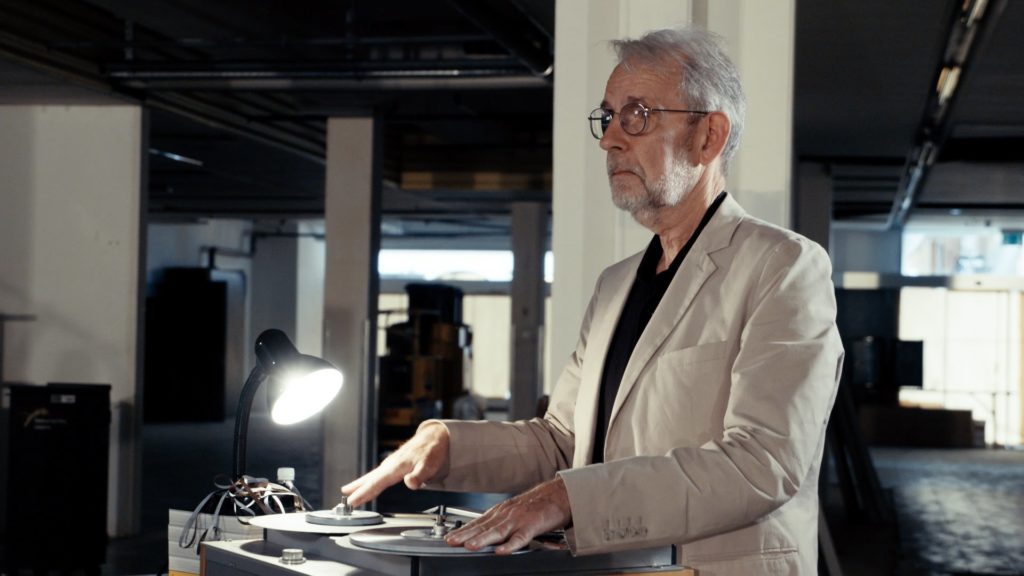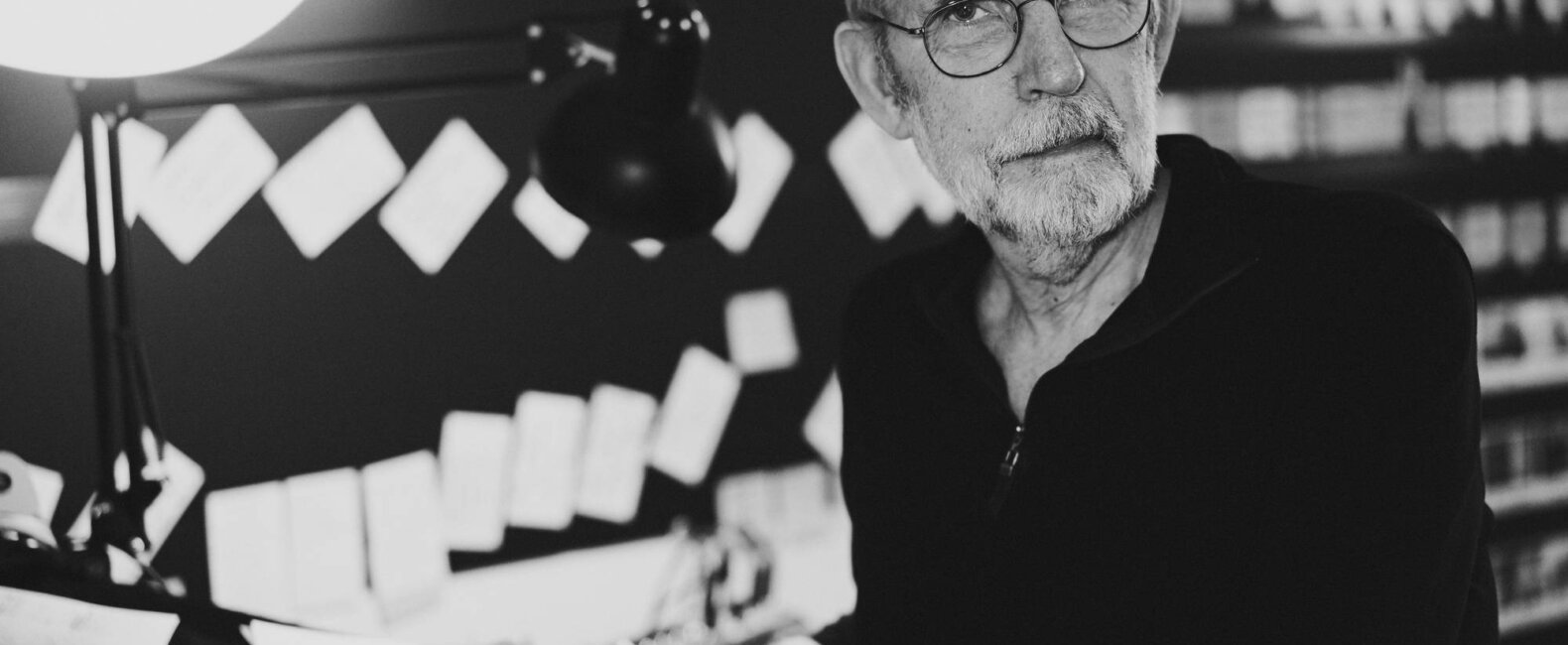Forty years ago, legendary editor Walter Murch was working late one night on a film for Francis Ford Coppola called The Conversation (starring Gene Hackman). Like always, Murch was going back and forth through the footage, over and over again, looking to make the perfect cuts. Murch cuts intuitively, in real time. He never goes frame by frame. As the night went on, Murch started to notice something weird happening: Every time he made a cut, it seemed to line up perfectly with Gene Hackman blinking. “I began to get the sense that there was some collaboration going on between myself and…Gene Hackman,” Murch told Radiolab during an interview in 2009. What Murch had stumbled upon wasn’t just a useful editing technique; it was theory for why film editing works.
After all, there’s really no reason why editing should work. As Murch explains it in his book In the Blink of an Eye (which we highly recommend):
[The cut] represents a total and instantaneous displacement of one field of vision with another, a displacement that sometimes also entails a jump forward or backward in time as well as space. It works but it easily could have been otherwise, since nothing in our day-to-day experience seems to prepare us for such a thing.
What Murch was discovering late that night was that cutting and blinking have a lot more in common than anyone had previously realized. And the implications are extremely useful for film editors everywhere — whether they’re working on the next Francis Ford Coppola feature or the next Vimeo Staff Pick.
Walter Murch on the role of an editor and the importance of mentorship:
BLINKING
If you’re like us, then you probably thought the purpose of blinking was to keep our eyes from drying up like raisins. Wrong. Blinking is a huge mystery, and nobody is exactly sure why we do it. What we do know, though, is that it seems to be tied very closely to the way we perceive reality.
“Start a conversation with somebody and watch when they blink,” Murch suggests. “I believe you will find that your listener will blink at the precise moment he or she ‘gets’ the idea of what you are saying, not an instant earlier or later.”
Blinking seems to be a way for us to “process” chunks of reality, allowing our minds to take in whole moments rather than one continuous stream of information. Blinks are like punctuation marks. They turn a ramble of thoughts into understandable sentences.
CUTTING
Cutting, Murch suggests, works the exact same way. “Similarly — in film — a shot presents us with an idea, or a sequence of ideas, and the cut is a ‘blink’ that separates and punctuates those ideas. At the moment you decide to cut, what you are saying is, in effect, ‘I am going to bring this idea to an end and start something new.’” Murch’s edits unintentionally lined up with Hackman’s blinks because Murch and Hackman were doing the same thing: breaking up ideas into coherent, consumable chunks. They were creating sentences.
This discovery leads us to a very practical takeaway: Look for blinks when you’re making cuts. But, more interestingly, it also indicates a much larger phenomenon happening between the editor, the actor, and the audience watching the finished film.
More practical wisdom from Walter Murch. The Rule of Six:
A study in Japan found that while watching a movie, an audience’s blinking pattern will synch up — not only with the film, but also with the other members of the audience. Every time one person blinks, about 70 other people are blinking right along with them*. It’s beautiful, when you think about it: a collective experience happening between filmmakers and the filmgoers. Maybe that’s part of the reason why films are so magical: They create this brief moment when everybody around you is on the exact same page.
But — and this is important — this “synching up” only happens when the film is “working,” when the audience is absorbed into the rhythm and flow of the story. Murch again:
That brings me back to one of the central responsibilities of the editor, which is to establish an interesting, coherent rhythm of emotion and thought — on the tiniest and largest scales — that allows the audience to trust, to give themselves to the film. Without their knowing why, a poorly edited film will cause the audience to hold back, unconsciously saying to themselves, ‘There’s something scattered and nervous about the way the film is thinking, the way it presents itself. I don’t want to think that way; therefore, I’m not going to give as much of myself to the film as I might.’ Whereas a good film that is well-edited [sic] seems like an exciting extension and elaboration of the audience’s own feelings and thoughts, and they will therefore give themselves to it, as it gives itself to them.

So how do you create an edit that people will synch up with?
For Walter Murch, it goes back to the intuitive way he cuts his films together, feeling out the ideas within each scene, making cuts in real time. After he makes his first cut, he watches the same scene over again and tries to make that same cut. If his subsequent cuts fall on two different frames, he knows he hasn’t gotten the true rhythm of the scene. And that rhythm, interestingly, almost exactly matches the way people blink. “Statistically the two rates — of real-life blinking and of film cutting — are close enough for comparison,” Murch writes. “A convincing action sequence might have around twenty-five cuts a minute, whereas a dialogue scene would still feel ‘normal’ (in an American film) averaging six cuts per minute.”
So take a page out of Walter Murch’s playbook and start thinking about the way you blink and the way the people around you blink. It just might change your next film, your next edit, and your next cut.
Check out Walter Murch on Radiolab and in his book In the Blink of an Eye.
Also, here’s something crazy we learned from Radiolab: Every minute we lose about six seconds of visual information to blinking. In a two-hour film, the audience will have its eyes closed for 15 minutes.

















































































